1. Labrador Retriever
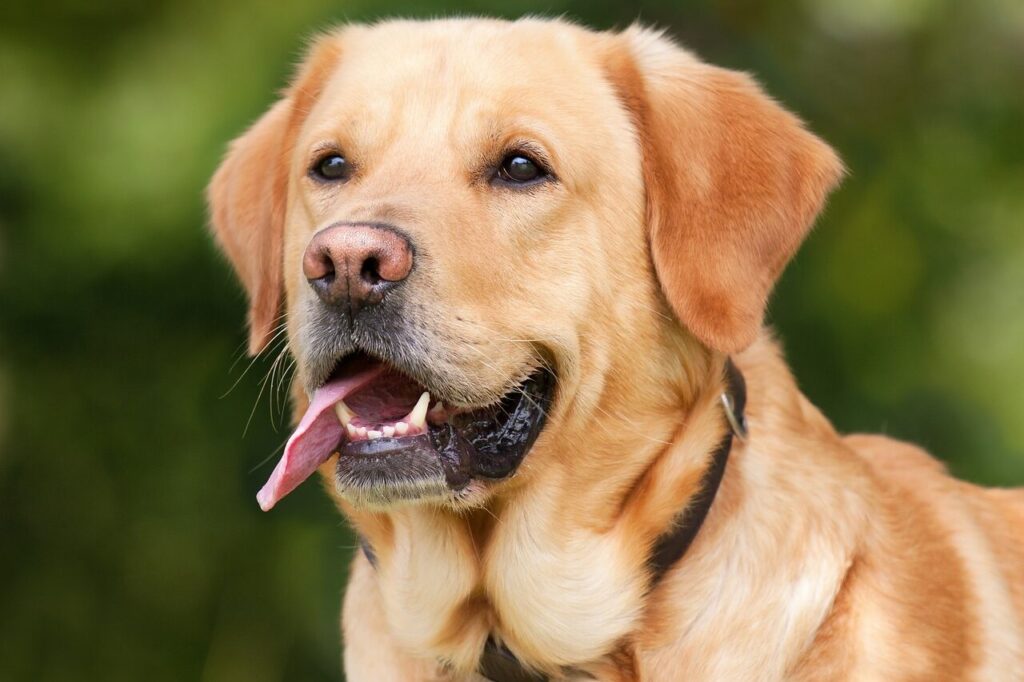
The easygoing nature of the Labrador Retriever often hides a fierce need for human connection. While they are famously friendly and social, they can become deeply hurt and attention-seeking when they feel ignored or replaced. Labs thrive on being their owner’s main focus, and if another pet or person starts receiving too much affection, their methods for reclaiming the spotlight are often persistent, though gentle. They won’t usually show aggression, but instead, they’ll become the masters of the subtle art of interruption. A Lab might gently, but firmly, nudge your arm while you’re petting another animal, or perhaps more dramatically, they will park their entire body directly between you and the “competition.” This behavior isn’t about aggression; it’s about their deep-seated bond with their humans and a clear signal that they believe they are the rightful recipient of all affection. Owners often report that the best way to manage this is not to punish the behavior, but to make a deliberate effort to include the Lab in the attention or give them specific jobs or rewards to remind them of their valued place. Their jealousy is less about hostility and more about a persistent plea for their favorite thing in the world: your undivided love.
2. Golden Retriever
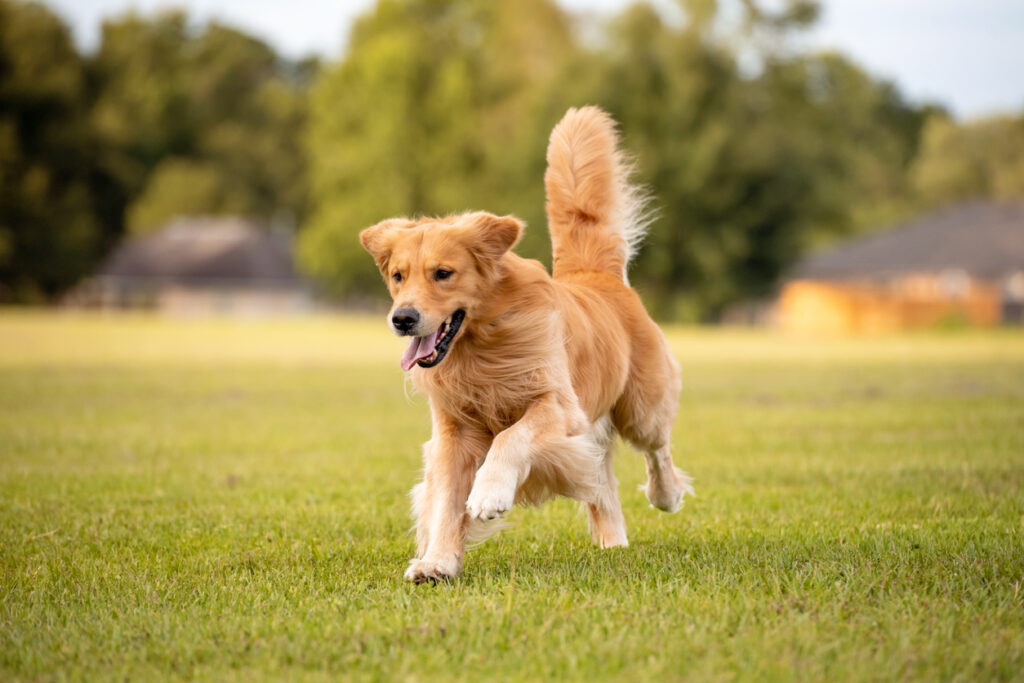
Golden Retrievers are the quintessential ‘people pleasers,’ bred to work closely with humans, which instills in them a profound need for constant, visible reassurance and approval. Their intense desire to be involved in everything their human does is what often fuels their episodes of jealousy. If a Golden sees their owner focusing on another pet, or even just a long phone conversation, they won’t typically resort to barking or growling. Instead, their method of intervention is more overtly charming and needy. They are masters of the ‘silent lean’, where they press their entire, substantial body weight against your legs or side, a clear physical demand for contact and acknowledgement. Another signature move is the ‘draped paw’: they’ll gently lay a paw over your lap, or even on the back of the animal you are petting, a subtle yet unmistakable gesture that reminds you who is boss. This behavior is rooted in their insecurity about being sidelined and their powerful bond to their families. They are highly sensitive to emotional shifts and will quickly pick up on any perceived exclusion, making them silently insistent that they are the primary beneficiary of all available affection. For a Golden, a steady flow of attention isn’t a luxury; it’s a deep-seated necessity.
3. German Shepherd
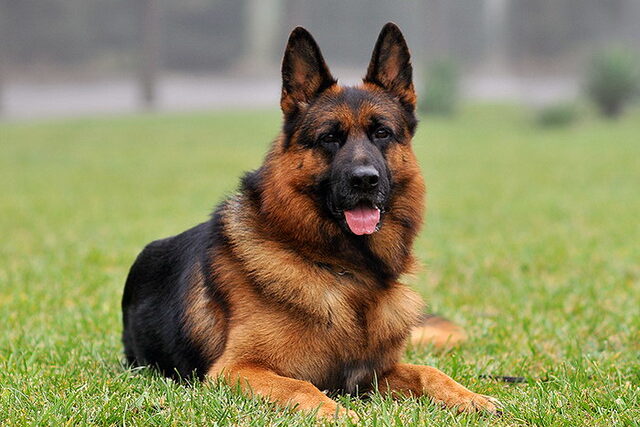
The German Shepherd is renowned for its intense loyalty and protective nature, qualities that, when coupled with a strong bonding instinct, can easily translate into possessiveness over their primary human. This breed often views their owner as the core of their world, and their devotion is absolute. When they perceive a threat to that bond, whether it’s another pet, a visitor, or even a baby, their protective instincts are triggered, manifesting as jealousy. This isn’t just about attention; for a German Shepherd, it’s about safeguarding their connection and position within the ‘pack.’ Owners often observe a distinct change in behavior: they may begin to pace restlessly when attention is focused elsewhere, emitting low, anxious whines, or even resorting to sharp, brief barks aimed at interrupting the interaction. The most common sign, however, is the ‘bodyguard’ stance, where the Shepherd will physically plant themselves as close to their human as possible, often standing or sitting directly between the owner and the perceived rival. This act is a clear, physical boundary-setting maneuver. Managing a jealous German Shepherd requires consistent training and clear leadership to assure them their status is secure, reinforcing that protecting their human doesn’t mean monopolizing their time.
4. French Bulldog
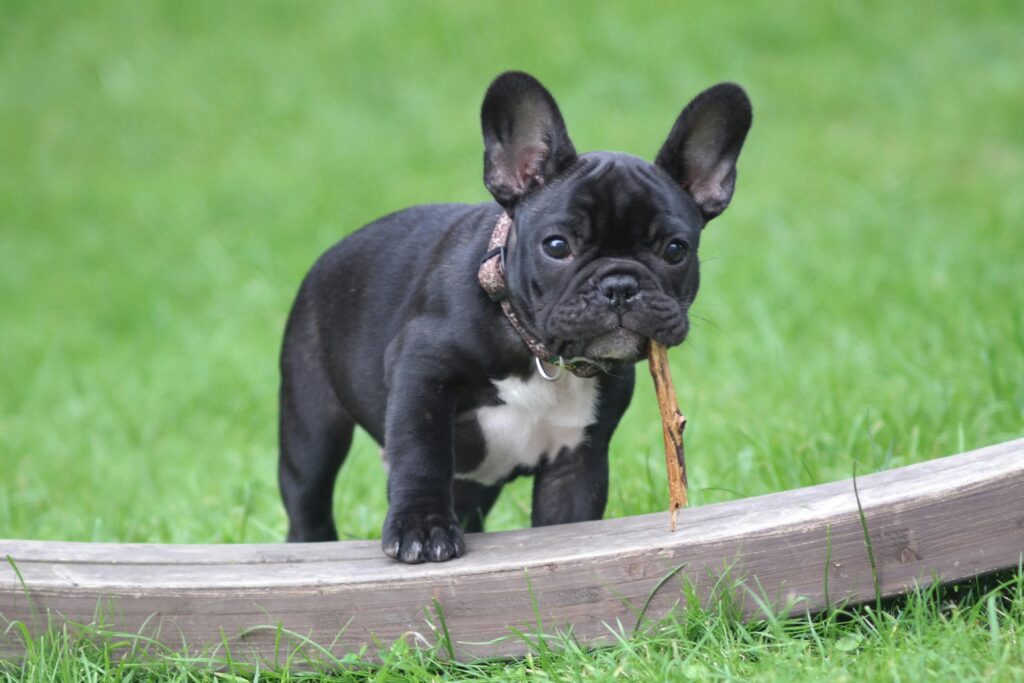
French Bulldogs, or ‘Frenchies,’ thrive on being the center of attention and are deeply reliant on constant human companionship and cuddles. Their entire existence revolves around being close to their people, making them particularly prone to jealousy when the spotlight shifts. Unlike larger, more reserved breeds, Frenchies are not subtle about their displeasure; they wear their hearts (and their irritation) right on their little, squishy faces. When an owner focuses on a phone, a book, or, heaven forbid, another pet, a Frenchie will typically enter a dramatic state of ‘pouting’ or ‘sulking.’ They might retreat to a spot where they can give the owner a constant, mournful stare, or more directly, they will climb onto the owner’s lap, even if it’s already occupied, with a singular, determined focus. The noises they make can range from insistent snorts and sighs to low, rumbling complaints, a chorus designed to guilt their human into immediate surrender. This behavior stems from their immense need for physical contact and their belief that they are, in all situations, the most deserving of attention. For a Frenchie, jealousy is simply a tool for efficiently restoring the natural order of the universe, where they are king or queen.
5. Chihuahua
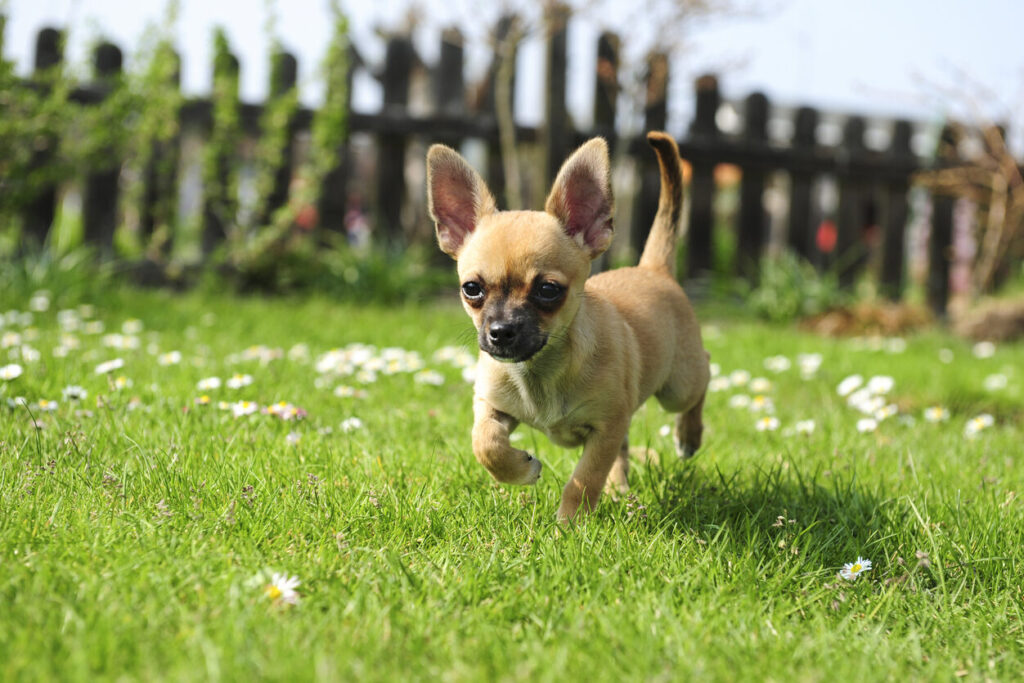
The Chihuahua, despite its tiny stature, possesses a massive personality and an even larger ego, often bonding so intensely with a single person that they become fiercely protective and territorial over them. This intense devotion is the root of their profound jealousy. They often perceive anyone or anything that steals their human’s focus as a direct threat to their unique, cherished relationship. When a rival, be it a visiting friend, a new baby, or another pet, gets attention, the Chihuahua is one of the quickest breeds to escalate their reaction. Their methods are vocal and aggressive: they will often resort to sharp, high-pitched barking, insistent yelping, or even defensive growling and snapping. Their diminutive size does not deter them from attempting to physically insert themselves into the situation, often darting between the owner and the rival in a bold attempt to break up the interaction. This behavior is not just about being spoiled; it’s a deeply ingrained ‘small dog syndrome’ where their anxiety about being overshadowed or ignored is expressed through aggressive dominance. Owners need to be mindful that their jealousy comes from a place of insecurity and an oversized ego that refuses to share the object of its devotion.
6. Dachshund
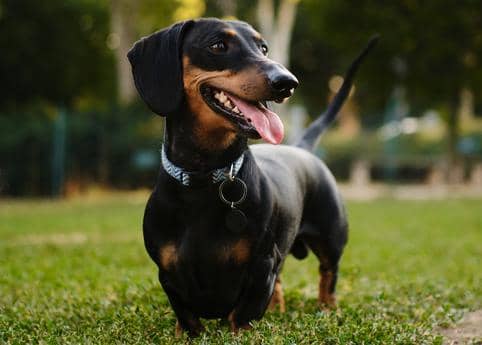
Dachshunds are a breed characterized by a deep devotion to their families and a stubborn, often tunnel-visioned, desire to be included in all activities. This combination of intense loyalty and willful persistence makes them notorious for their jealous streaks, particularly when their attention-loving nature is frustrated by a rival. When a Dachshund feels their time or lap space is being usurped by another pet, their reaction is often relentless and can involve various forms of physical and vocal protest. They might start barking insistently and loudly to interrupt the interaction, or they could become physically destructive, such as digging frantically at blankets or furniture as a clear sign of their displeasure and anxiety. Their most effective tactic, however, is their unique ability to wedge their long bodies into the scene. They will deliberately squeeze themselves onto the owner’s lap, even if occupied, or position themselves directly under the owner’s arm, acting as a furry, low-slung barrier. Their jealousy is driven by a profound dislike of exclusion; they operate under the belief that they are the most important figure in the home, and they will not rest until the balance of attention is firmly tipped back in their favor.
7. Cocker Spaniel

The Cocker Spaniel is an inherently gentle and exceptionally affectionate breed, characterized by soft eyes and a sweet, sensitive nature. However, it is precisely this sensitivity that makes them prone to feeling deeply slighted or overlooked, resulting in a type of jealousy that feels almost childlike in its purity and sincerity. Cockers are emotionally attuned to their owners and crave constant validation of their bond. When their human’s attention is directed toward another animal, they seldom react with aggression or loud barking. Instead, they become dramatically melancholy. The classic sign of a jealous Cocker is the ‘sad eyes’ routine, where they will sit just out of reach, gazing at the owner with a truly mournful, soulful expression designed to invoke immediate guilt. They may also emit soft, persistent whimpers or sighs, essentially sulking until the owner acknowledges their distress. This behavior is a direct plea for reassurance. Because they are so eager to please and easily attached, any perceived shift in the affection hierarchy is profoundly unsettling for them, and they use their sweet, wounded demeanor to swiftly restore emotional equilibrium.
8. Pomeranian
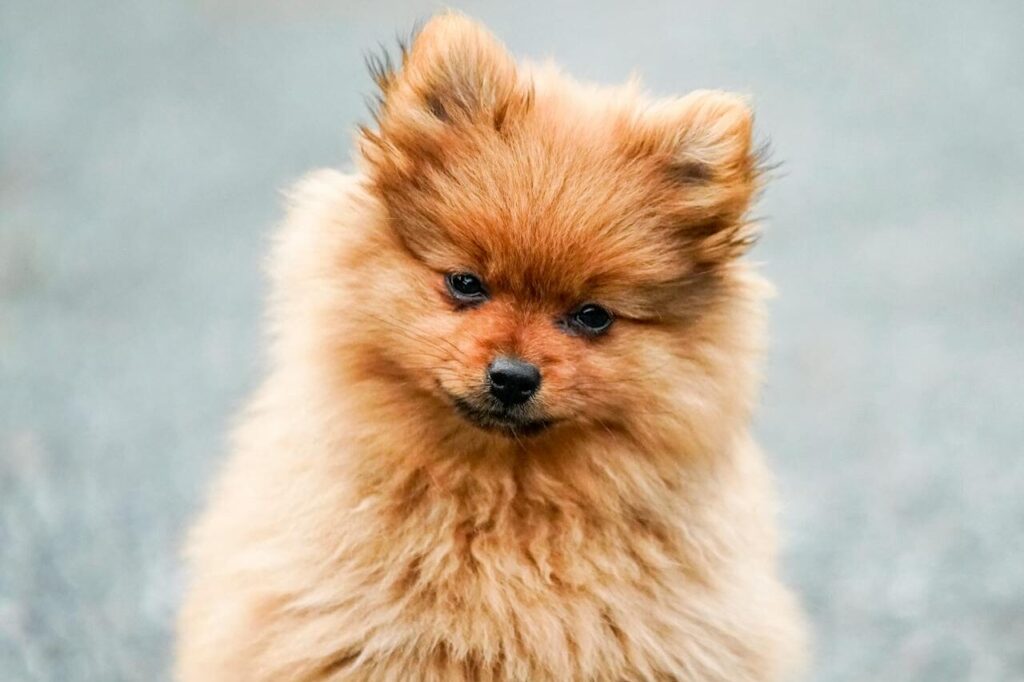
Pomeranians may be among the smallest dogs, but they operate with the confidence and demanding attitude of a much larger breed. They thrive on being the primary focus of their human’s doting and affection, which is why they have a notoriously low tolerance for sharing the spotlight. A Pom believes that the world, and specifically, their owner’s lap, is meant to revolve entirely around them. If an owner dares to give attention to another pet or even a human visitor, the Pomeranian’s reaction is swift, loud, and assertive. They often resort to sharp, persistent barking, using their surprisingly powerful voice to interrupt any non-Pom-centric interaction. They might also engage in a confident, aggressive prance or strut, circling the rival with a challenging demeanor as a physical demand for the focus to shift back. This jealousy is a pure expression of their self-importance. For the Pomeranian, their fluffy, diminutive appearance is merely a tool to gain access to prime cuddle real estate, and they feel genuinely insulted when that access is threatened. Their jealousy is less about anxiety and more about a bold, unshakeable belief that they are, in all things, superior and therefore, deserve the spotlight without fail.
9. Beagle
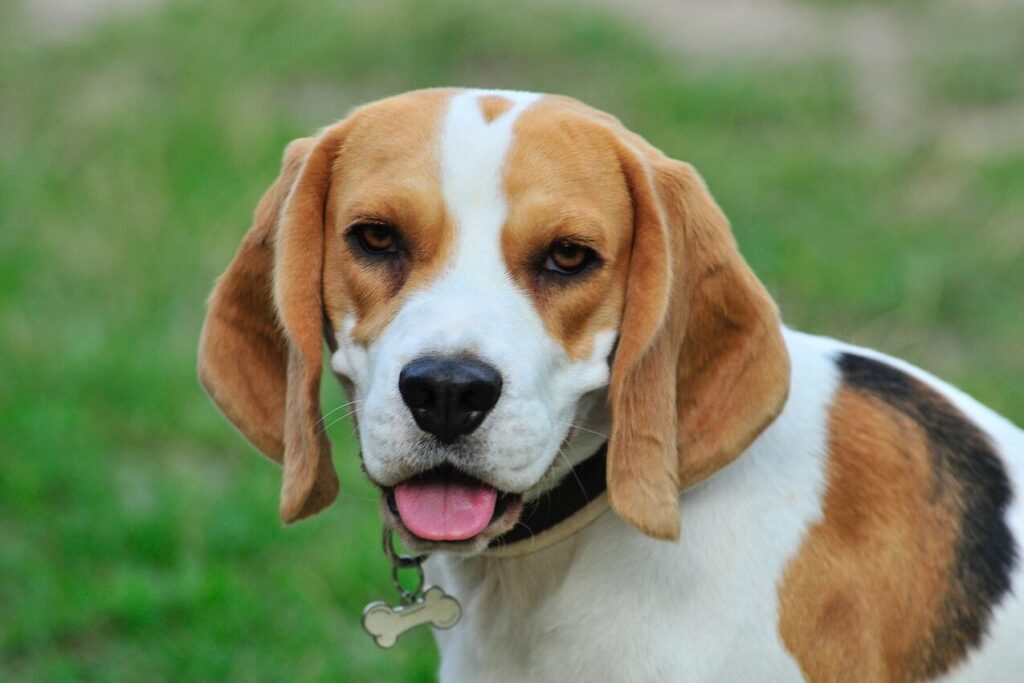
As classic pack dogs, Beagles possess an innate, deep-seated need for inclusion and a clear hierarchy within their human ‘pack.’ This strong pack instinct means they dislike nothing more than when their human family’s attention is divided or when they feel excluded from an interaction. Their jealousy is rooted in their loyalty and their profound need to be a fully integrated, recognized member of the group. If an owner is fussing over another dog, a cat, or even a person, a Beagle’s reaction is rarely subtle. They are masters of the loud, persistent whine, using their characteristic vocalizations to great effect to make it clear they are distressed and feel left out. They will often jump up insistently, pawing and nudging their human until they are included in the petting or acknowledged with a specific command or treat. Their behavior isn’t typically aggressive toward the rival; rather, it’s a focused, high-energy effort directed at their owner to force their inclusion back into the circle of attention. For a Beagle, the feeling of being overlooked goes against their core identity as a loyal pack member, and they will employ every tool in their vocal and physical arsenal to correct the social imbalance.
10. Boxer
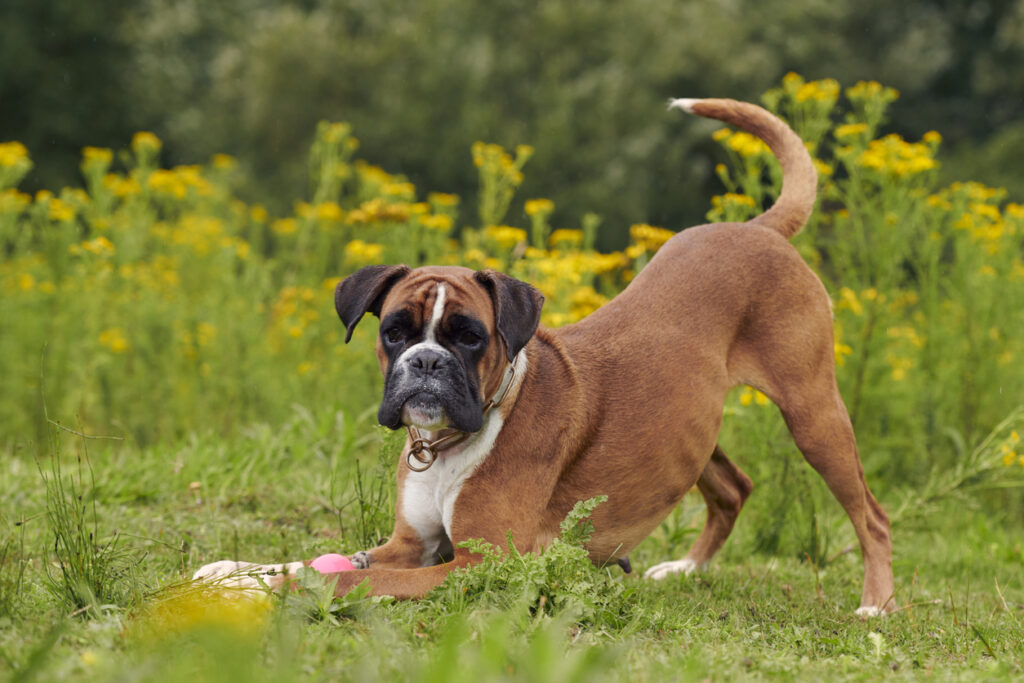
Boxers are the playful, often goofy, clowns of the dog world, known for their boundless energy and expressive faces. Despite their silly nature, they are also highly sensitive and form deep, affectionate attachments to their families. This sensitivity means they are easily slighted and prone to bouts of jealous behavior when they feel marginalized or left out of the familial warmth. Boxers thrive on physical contact and being involved, so when an owner directs their affection elsewhere, the Boxer’s response is usually a blend of playful antics and determined physical intervention. They will often employ their unique, clumsy pushiness to insert themselves, literally shoving their broad, muscular bodies into hugs or sitting squarely between an owner and a person or pet. Their attempts to get attention often look like an extension of their usual playful behavior, but the underlying motivation is a strong need to be acknowledged and included. Their ‘goofy antics’, the head tilts, the jumping, the persistent nudging, are a deliberate strategy to double as reminders that they are the true object of affection and that they refuse to be overlooked for long.
11. Great Dane
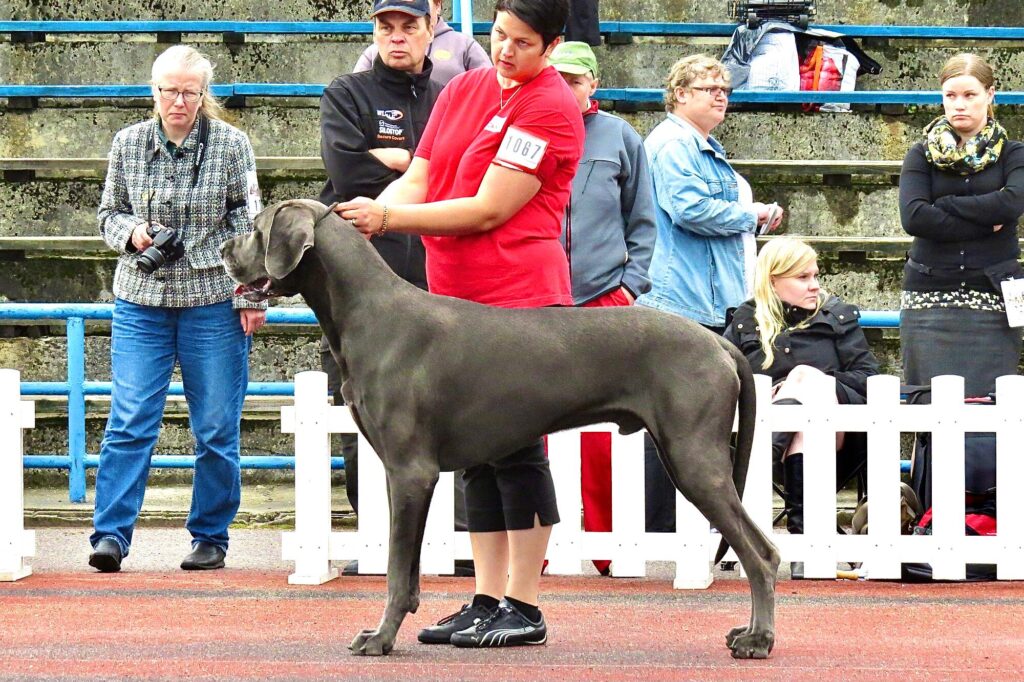
Despite their imposing size, Great Danes are affectionately known as the ‘Apollo of Dogs’ and are famous for believing they are pint-sized lapdogs. This breed forms profound and sometimes dependent attachments to their humans, which makes them surprisingly susceptible to massive displays of jealousy. They are highly sensitive to emotional shifts and thrive on physical closeness. When a Great Dane observes their human giving affection to another animal, their response is driven by a singular, immense desire to reclaim their favorite spot: their owner’s lap. The physical manifestation of this jealousy is often breathtakingly awkward and large: they will attempt to climb onto the owner’s space, often literally trying to sit on the lap that is already occupied, or stand over the interaction, resting their massive heads firmly on the owner’s shoulder or head. Their sheer size means their attention-seeking is an unavoidable event. Their jealousy isn’t malicious; it’s born from an intense, often comical, need for physical contact and their firm conviction that they are the only creature in the household truly suited for the role of ‘lap dog.’
12. Shih Tzu

The Shih Tzu was historically a pampered companion of Chinese royalty, a heritage that seems to have left an indelible mark on their personalities. They are sweet, loving, and deeply attached to their humans, but they absolutely expect royal treatment and constant doting, making them highly intolerant of being ignored or having to share the throne. For a Shih Tzu, any diversion of the owner’s affection to another animal is seen as a breach of contract and a profound disrespect to their inherent status. Their jealous reactions are often dramatically expressive. They will not hesitate to pout visibly, bark sharply and repeatedly, or employ various physical maneuvers to get their way, such as demanding to be carried immediately so they can survey the scene from a position of superiority. They are not shy about their entitlement. Their jealousy is less about a deep sense of insecurity and more about a firm, princess-like conviction that the spotlight is theirs alone, and they will use every charming, if demanding, tactic to ensure the crown is not shared.
13. Siamese Cat
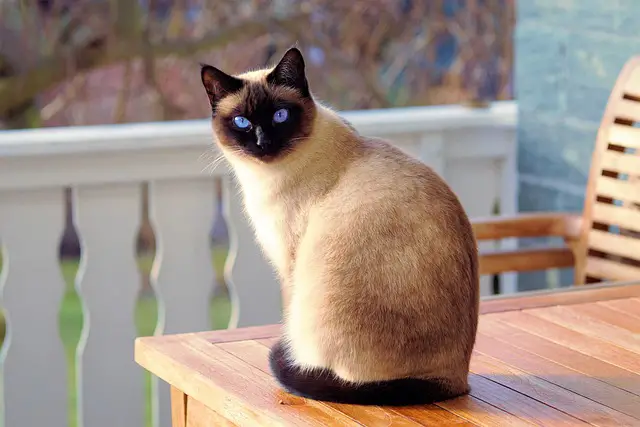
Siamese cats are arguably the most demanding and vocal of the feline world, known for forming extraordinarily deep, often singular, bonds with one human. This intense devotion is the very fuel for their dramatic, vocal brand of jealousy. For a Siamese, their owner is an exclusive possession, and they are fiercely territorial over that relationship. If an owner is observed petting another animal, the Siamese’s reaction is almost guaranteed to be immediate and impossible to ignore. They will begin to yowl loudly and incessantly with their characteristic, demanding voices, creating a cacophony designed to break up the competing interaction. Physical intervention is also common: a jealous Siamese will often push their head or body forcefully between the owner and the rival or, in more extreme cases, issue a swift, authoritative swat to the offending animal. Their jealousy is a highly public performance, a vocal and physical drama that stems from their need for constant engagement and their complete refusal to play second fiddle. In the mind of a Siamese, the spotlight should never wander, and their expressive nature ensures it doesn’t.
14. Bengal Cat
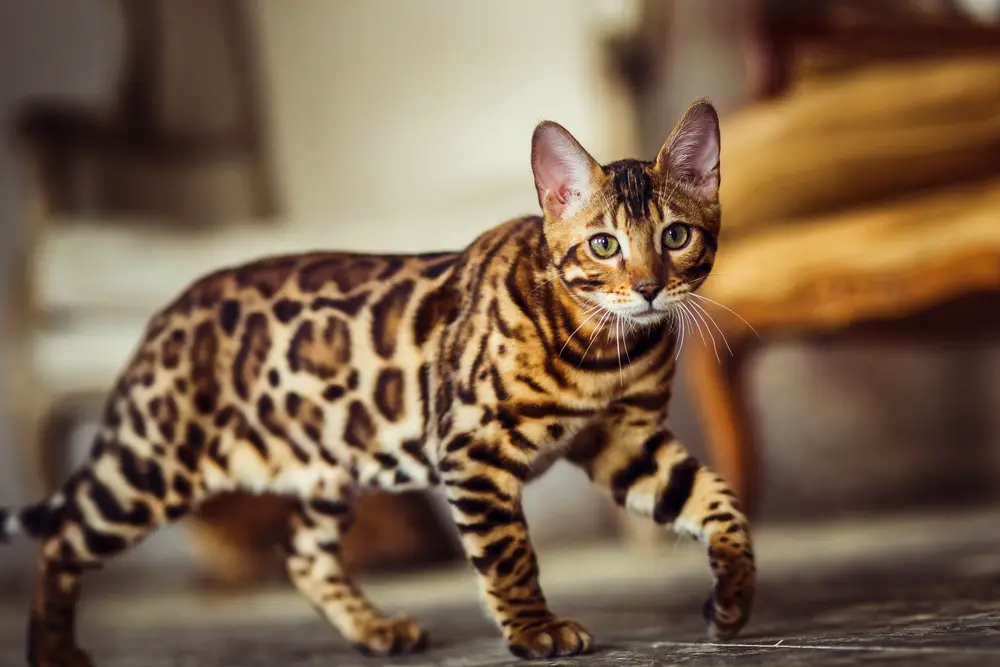
Bengal cats are known for their wild ancestry, which translates into an active, intelligent, and highly demanding personality that requires constant stimulation and engagement. They thrive on being involved and are highly intolerant of being relegated to a secondary status. When a Bengal feels that their focus-demanding life is being interrupted by an owner’s attention to another pet, their reaction is often a high-energy, mischievous display designed to reclaim the spotlight. Rather than just sulking, a jealous Bengal is more likely to engage in disruptive behavior. They might begin to knock objects off shelves or tables within the owner’s sightline, or suddenly become very vocal and demanding for play by persistently pawing at the owner’s leg or running circuits around the room noisily. This is not just random play; it is a calculated strategy to create a distraction that requires the owner’s immediate intervention. Their jealous energy is relentless and focused, serving as a clear, action-based reminder to their human that they are the highest priority for attention and playtime.
15. Sphynx Cat

Sphynx cats are perhaps the neediest of the feline world, defined by a profound, constant craving for warmth and physical touch, thanks to their lack of a coat. This intense need for contact makes them extraordinarily clingy and deeply susceptible to jealousy when their primary source of warmth and affection, their human, is occupied by another pet. For a Sphynx, being excluded from a cuddle session is not just an emotional slight; it’s a physical discomfort. When an owner holds another animal, the Sphynx’s response is focused entirely on re-establishing contact. They will meow persistently and plaintively, not stopping until they are acknowledged. Their primary tactic, however, is physical insertion. They will often climb onto the owner’s lap regardless of who is there, or attempt to squeeze their sleek bodies directly into the cuddle session, wedging themselves between the owner and the rival. This persistent, velcro-like behavior stems from their complete reliance on their human for comfort and their low tolerance for anything that keeps them from their favorite, and warmest, spot.
16. Maine Coon
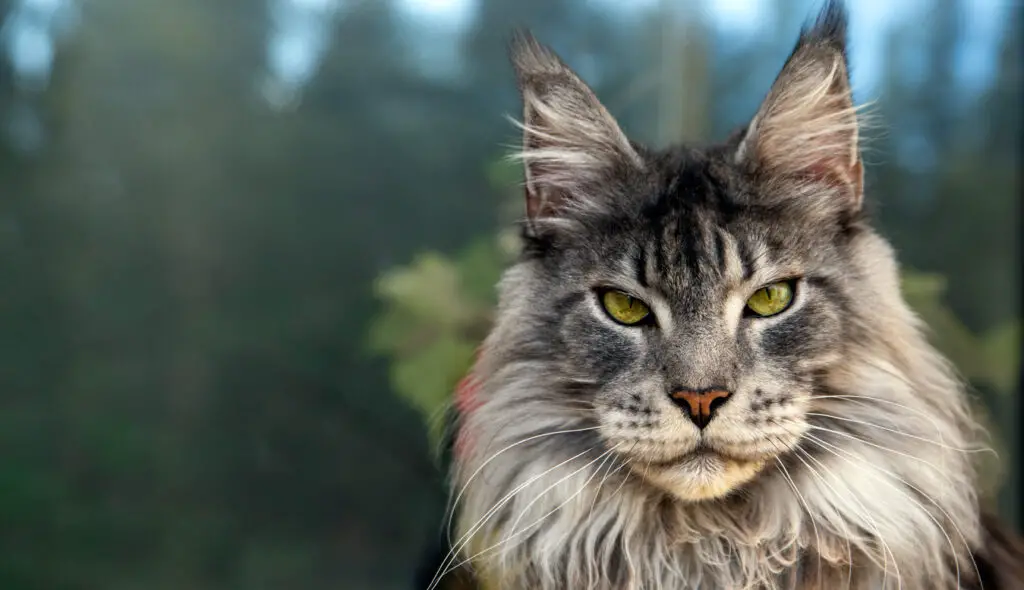
The Maine Coon is often called the ‘gentle giant’ of the cat world, known for its affectionate, dog-like personality and impressive size. While they are usually calm, they form deep emotional attachments and genuinely dislike being overlooked or marginalized. Their enormous size means that their attempts to seek attention, even when gentle, are impossible to ignore. When a Maine Coon sees their human focusing their affection on another animal, their jealousy manifests as a stately, deliberate intervention. They will lumber into the scene with their substantial presence, using their big, furry paws to gently tap or paw at the owner’s arm or leg as an insistent reminder. They also use their unique, trilling chirps and demanding meows to vocalize their displeasure and stake their claim. Their jealousy is rarely aggressive; instead, it’s a calm but physically imposing display of their desire to be involved. When a cat of that size decides to lean against you or insert themselves into your space, the sheer weight and scale of their attention-seeking behavior ensures that their gentle demand for affection is swiftly met.
17. Abyssinian Cat
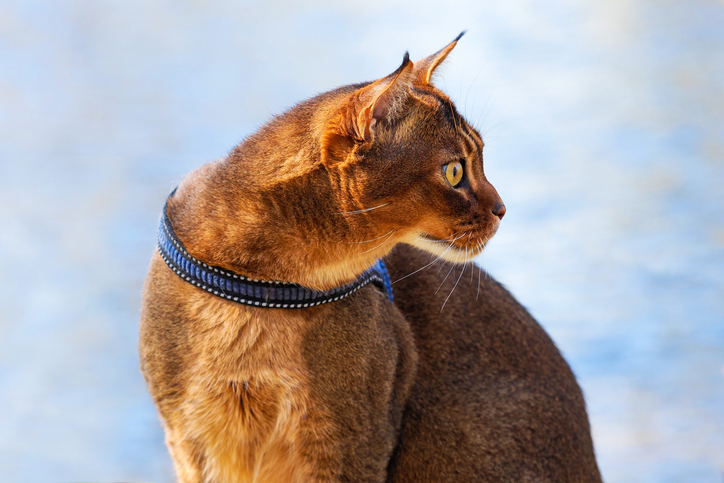
Abyssinian cats are known for their intelligent, independent, and playful nature, often called the ‘clowns’ of the cat kingdom. While they may seem self-sufficient, they are surprisingly possessive of their favorite humans and prefer to control when and how they receive attention. This blend of independence and territoriality means their jealousy is often expressed as an insistent, demanding takeover of the interaction. If a rival pet is receiving attention, an Abyssinian’s first move is typically to climb onto the owner’s lap completely uninvited, even if they were just aloof moments before. They will use their clever paws to insistently tap or paw at the owner’s hand, redirecting the petting motion back toward themselves. Their jealousy is an interesting mix of stubborn persistence and curiosity, as they often approach the rival animal to observe before quickly declaring themselves the superior recipient of the owner’s focus. They don’t beg; they simply dictate the terms of affection, making it clear that all emotional resources are best spent on their elegant, demanding form.
18. Ragdoll Cat
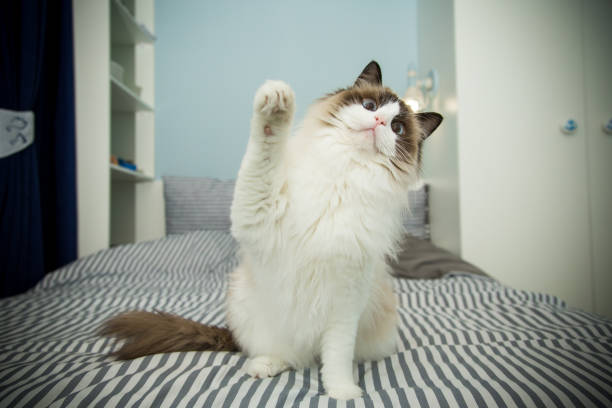
Ragdoll cats are famed for their unique trait of completely relaxing, or ‘flopping,’ into the arms of anyone who holds them, a sign of their profound trust and deep craving for human touch. Because they are bred to be utterly devoted lap cats, they fully expect and demand the undivided devotion of their owners. When another animal dares to take the spotlight, the Ragdoll’s reaction is often one of dramatic, yet quiet, displacement. Rather than creating a loud fuss, their jealousy is expressed through powerful, silent body language. They might begin to sulk visibly, moving to a nearby spot where they can maintain a focused, sad-eyed vigil over the interaction. Their most potent tactic, however, is the ‘dramatic sprawl’: they will slowly, deliberately stretch and splay their bodies across the owner’s lap or chest, effectively making it impossible for the owner to continue petting the rival. Their quiet jealousy speaks volumes in every slow blink and needy cuddle, a clear, physical manifestation of their belief that they, and only they, are meant to be the central object of all human affection.
19. Pug

Pugs are famously clingy, affectionately nicknamed ‘velcro dogs’ for their deep, unwavering devotion and desire to be in constant physical contact with their humans. This immense need for closeness makes them extremely susceptible to jealousy whenever that connection is threatened or ignored. The moment an owner diverts attention to a phone, a guest, or another pet, the Pug’s various unique noises and actions begin. They are masters of the insistent grunt and the pitiful whine, using their vocalizations to express displeasure without resorting to aggressive barking. Physically, they will attempt to climb their surprisingly substantial, clumsy bodies onto the owner’s lap or chest, no matter how occupied the space might be. Their jealous antics can be comical due to their pushed-in faces and wiggly movements, but the underlying motivation is a very real, very strong need for reassurance. For a Pug, being the focus of attention is not a luxury; it’s a necessary form of emotional validation that they will relentlessly pursue until their needs are met.
20. Bichon Frise
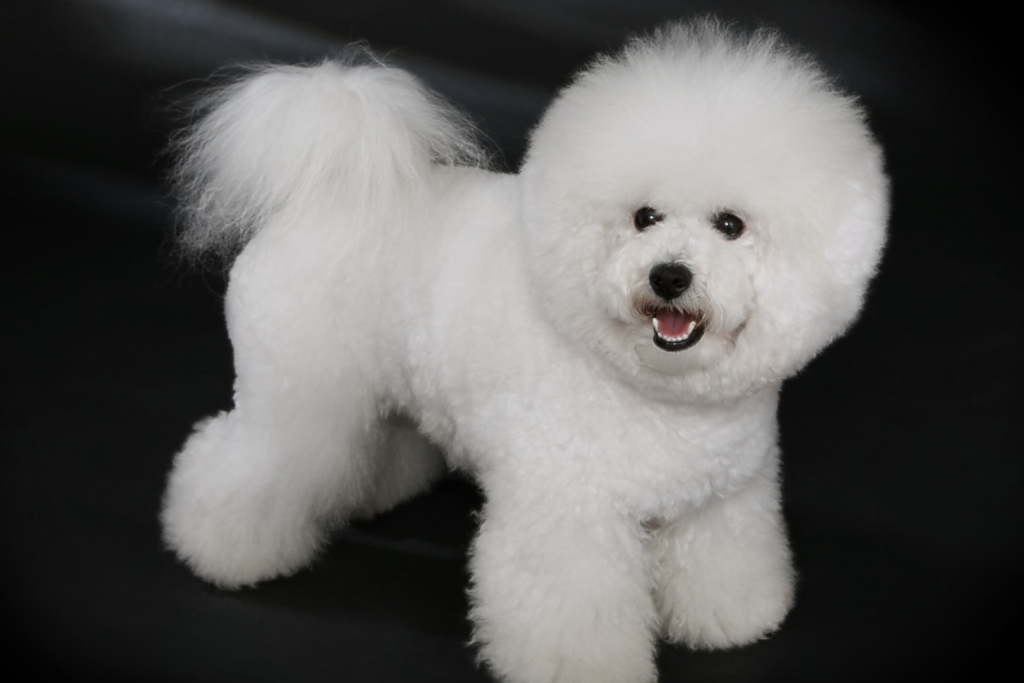
The Bichon Frise is a fluffy, cheerful companion breed that was historically a favorite among European royalty, a heritage that influences their expectation of constant human company. They are intensely social and thrive on being the center of attention, making them highly sensitive to competition from other pets. When their favorite human’s lap or attention is usurped, the Bichon’s jealousy is often expressed in a loud and demonstrative manner. They will resort to sharp, high-pitched barking to interrupt the interaction and make their presence known. A classic Bichon attention-seeking move is the ‘dance’, where they stand on their hind legs and perform a small, insistent jig until the owner gives in to their demands. Their goal is direct: to compel their owner to immediately scoop them up and restore them to the position of family favorite. Their jealousy is loud, energetic, and effective, a fluffy, charming ultimatum that is almost impossible for an owner to dismiss for long.
21. Yorkshire Terrier
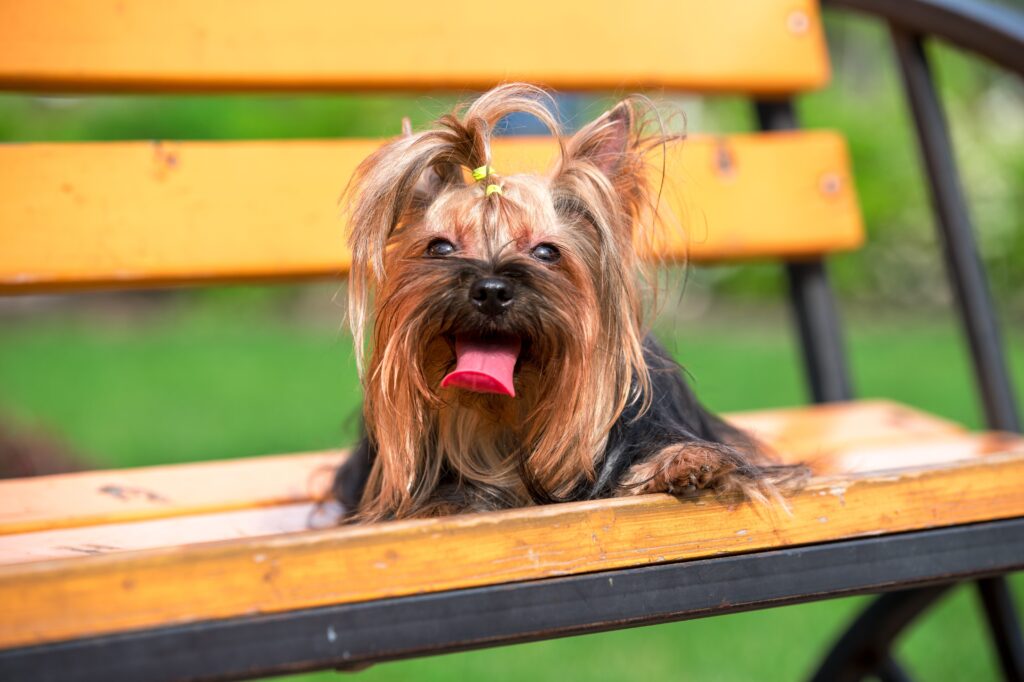
Yorkshire Terriers, or ‘Yorkies,’ are small in size but possess famously bold and confident personalities, often behaving like tiny, fiery emperors. This immense confidence fuels an equally immense possessiveness over their favorite human, leading them to despise sharing the spotlight with anyone or anything else. For a Yorkie, their human is their exclusive territory, and they will go to great lengths to defend their claim. When they perceive a rival receiving affection, their reaction is often the most confrontational of the toy breeds. They will bark loudly and persistently, and are known to shove their small bodies directly into the middle of any cuddle session. In more intense moments, some Yorkies may even resort to small nips or snaps at the air or the rival, a clear warning signal that they are not to be trifled with. Their jealous streak perfectly matches their feisty, bold personality, making them a tiny, yet mighty, attention hog whose demands are usually met quickly to restore peace.
22. Scottish Fold Cat
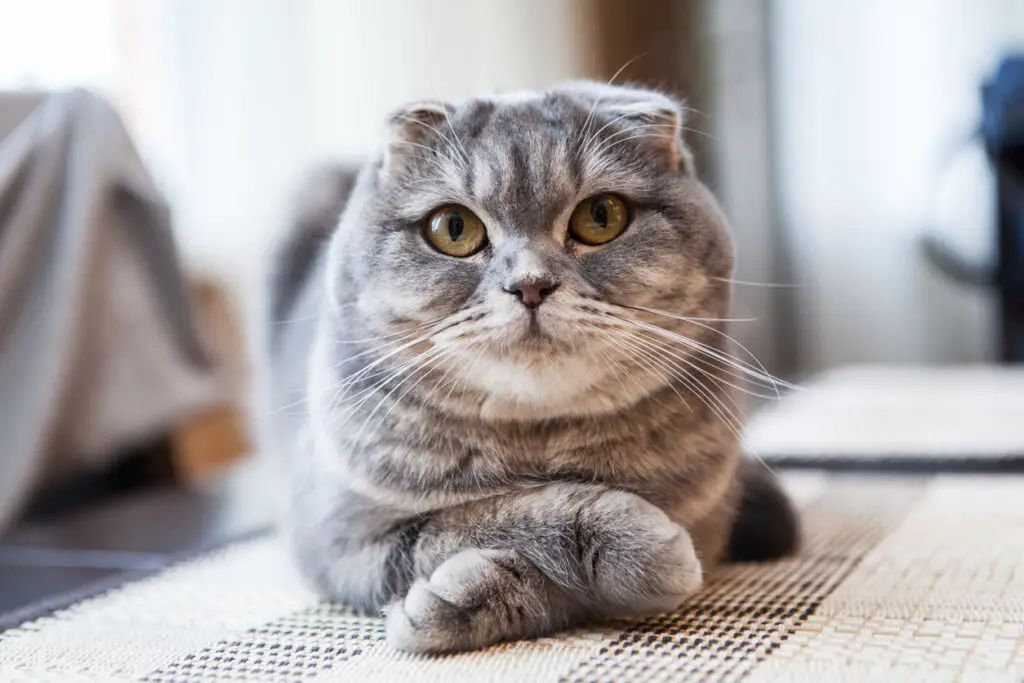
The Scottish Fold is a unique and gentle breed known for its distinctive folded ears and its calm, observant demeanor. While they are deeply affectionate and bond closely with their humans, their jealousy is often expressed in an understated, almost heartbreaking way, quite unlike the dramatic flare-ups of a Siamese. When a Scottish Fold sees their human directing affection elsewhere, they rarely lash out or make noise. Instead, their reaction is to retreat to a nearby, quiet spot, where they proceed to sulk visibly. They will sit and glare across the room with a focused, mournful intensity, using their expressive, wide eyes to communicate their profound feeling of being betrayed. This quiet form of jealousy is often highly effective because it induces guilt in the owner more swiftly than a loud protest. Their jealousy is an act of passive-aggression; they communicate their desire for affection through their obvious distress and refusal to participate until the emotional imbalance is corrected.
23. Maltese
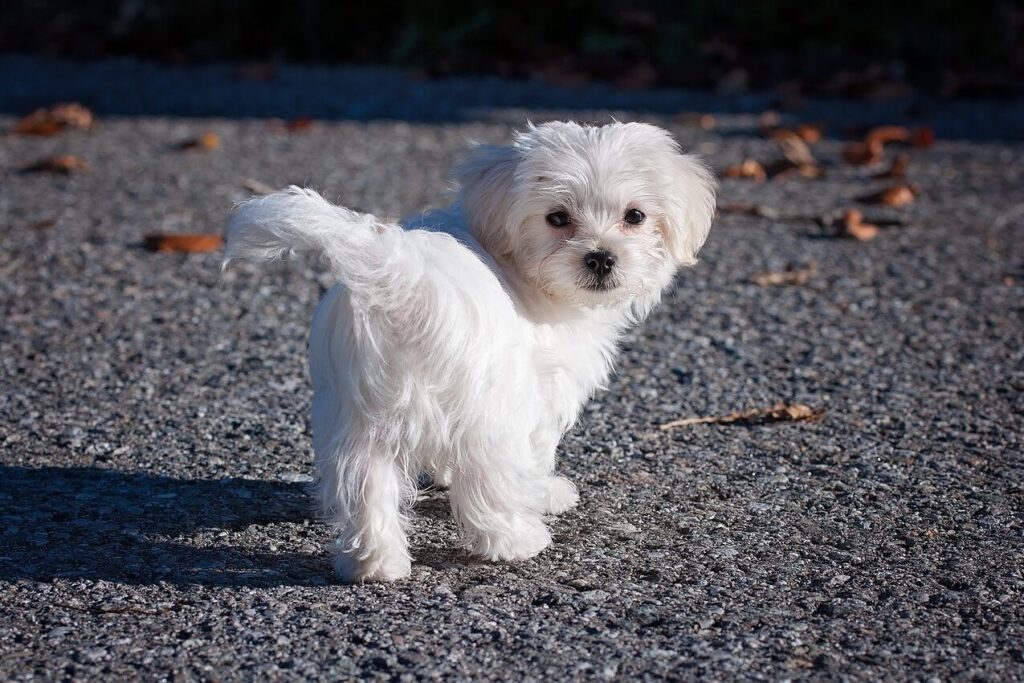
Maltese dogs are the quintessential lapdogs, having been bred for centuries purely as companions and doting family pets. They thrive entirely on constant affection and physical closeness, and their entire identity is wrapped up in their role as the cherished family favorite. When an owner’s attention is diverted away from them, even for a short time, their jealousy is triggered instantly and powerfully. They are masters of the persistent, insistent demand. A jealous Maltese will whine pitifully, not stopping until the noise is addressed, and use their small paws to nudge or paw relentlessly at the owner’s hand or leg. Their entire focus becomes a singular, focused effort to be included back into the circle of affection. For the Maltese, jealousy is simply the emotional defense mechanism they use to guard their cherished role as the recipient of all available doting, and they will not cease their efforts until they are once again secured in their owner’s arms or lap.
24. Exotic Shorthair Cat
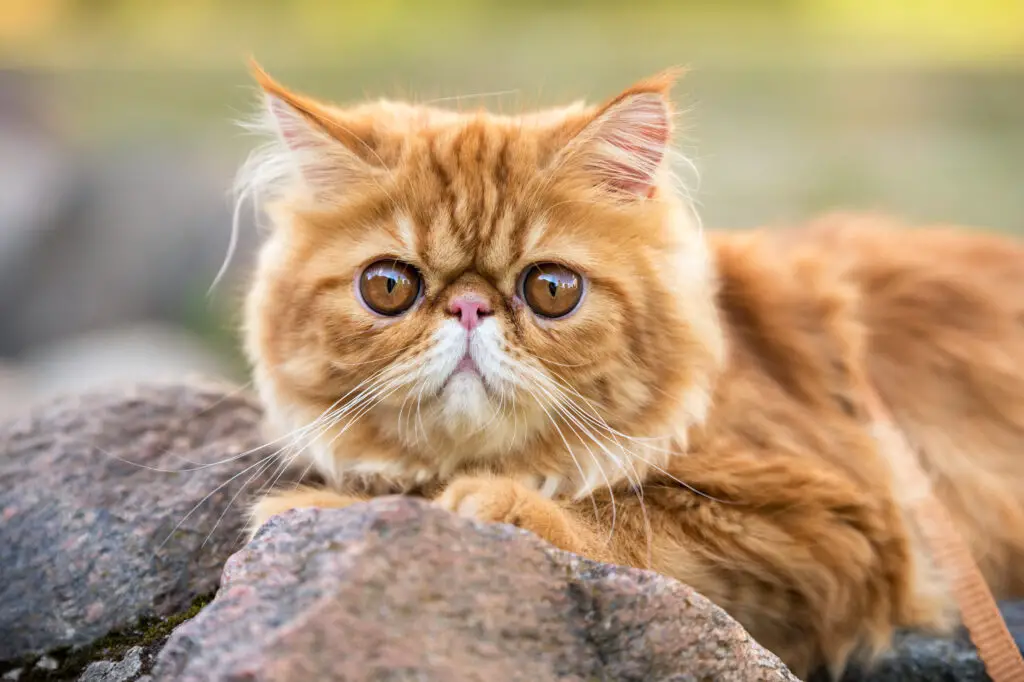
The Exotic Shorthair, essentially a shorthaired Persian, is a calm, placid cat that values stability and deep, consistent affection. They are often described as exceptionally loving and gentle, but they form a profound reliance on their owners for companionship. When they feel their established routine or their secure source of affection is threatened by a rival pet, their jealousy is expressed in a quiet, guilt-inducing manner. An Exotic Shorthair rarely makes a fuss; instead, they will hover nearby, remaining silent but standing or sitting within the owner’s peripheral vision. They use their signature large, round, expressive eyes to stare intently at the owner, their gaze a heavy, visible plea for attention. This quiet, persistent surveillance is often enough to make the owner feel deeply guilty for having strayed. Their jealousy is non-confrontational but deeply effective, serving as a constant, gentle, yet powerful emotional reminder that they are waiting patiently for the owner to return to their rightful duty of providing affection.
By reassuring our animals of their secure place in the family, we can often calm the most dramatic cases of pet jealousy. What unique ways does your pet demand attention?
This story 24 Dogs and Cats That Get the Most Jealous was first published on Daily FETCH


